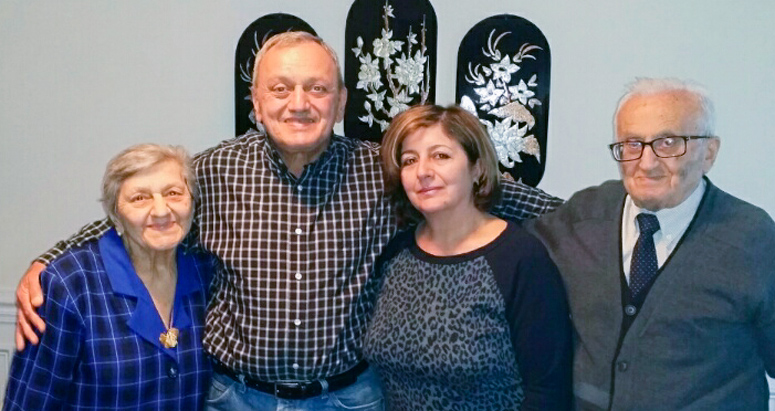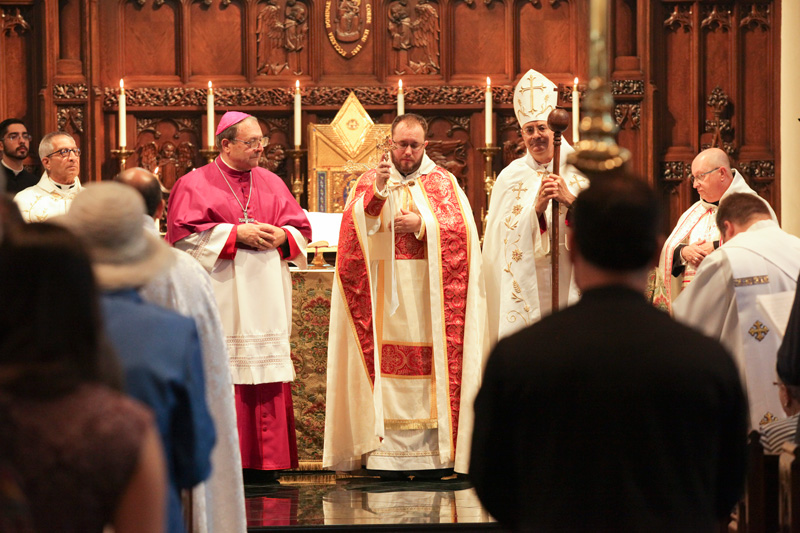GREER—Attendees at a recent Upstate workshop went beyond art appreciation and took brushes in hand to become part of the world of Byzantine iconography.
Participants from around the Carolinas gathered in July at St. Rafka Maronite Church to learn about and experience first-hand an art form that is built upon centuries of sacred traditions.
Theodoros Papadopoulos, who travels around the world presenting the workshops, said he wants his pupils to not only learn about the sacred art, but to enjoy the experience of painting — or writing, as it is also called — a religious icon.
“My goal for my students is, through the workshop, to experience the spiritual world of iconography, and help them comprehend the principles and the philosophy of this art, and practice the whole procedure of painting a Byzantine icon,” Papadopoulos said prior to the workshop. “What is more important to me is to enjoy the whole experience and not feel stressed to paint a perfect icon.”
Papadopoulos first provided a history lesson, with extensive background into Byzantine iconography, explaining both the rules for and the meanings behind the complex steps involved in creating an icon.
“The Byzantine Orthodox Iconography is not just an art; it’s a sacred art,” he told attendees. “It is not painting; it’s theology. It is not artistic expression; it is expectation of salvation. It is not decoration; it is meeting with the divine. It is not a picture; it is communion with Christ.
“The icon is the stairway that lifts us up in heaven and brings down heaven to hearth,” he continued. “It is a meeting place of created and uncreated, of divine and cosmic. Time does not exist. Past, present and future exist in the eternal now. … Iconography is a religious act.”
Icons differ from Western art in specific ways that celebrate various facets of Christian faith. Papadopoulos said Western artists developed a more-naturalistic approach, observing, for example, the rules of perspective, which dictate that objects in the foreground be larger to create an illusion of depth on a two-dimensional canvas.

Iconography, on the other hand, ignores perspective, giving the paintings a noticeably flat look.
“The three-dimensional perspective that played such an important role in Renaissance painting, for the Byzantine iconographers was seen as a major obstacle for the spiritual expression,” Papadopoulos said. “In Byzantine icons, there are only two dimensions, height and width. There is no depth.”
Iconography also eschews naturalist depictions of light and shadow, using a palette of gold leaf and egg tempera paints mixed with natural pigments to give the icons the appearance of having a seemingly inner light.
“Why aren’t there any shadows?” Papadopoulos asked attendees. The answer: “If the light comes from all quarters, and it comes from everywhere, there can be no shadow; the shadow’s deleted. Everything is light. All are bright and lucid, because it is illuminated by the light of God’s kingdom.”
Father Bartholomew Leon, pastor at St. Rafka, stopped by late in the weeklong workshop to hear Papadopoulos and to see the students’ progress. Father Leon noted the importance of iconography in Eastern Catholic churches, and said the workshop gave people the chance to compare the nuances of some of the different styles of iconography that have evolved over the centuries.
“One of the interesting things is that there are different forms of icons,” Father Leon said. “You have the Byzantine, which they are working on (in the workshop). And Theodoros is Greek Orthodox, and they have a slightly different style than, say, the Russians. The icons that are in our church are kind of a blend of another style, which is the Syriac style, with the Byzantine.”
For the sessions, Papadopoulos selected a detail of the icon of Christ Pantocrator, which is in the Monastery of the Protaton in Greece. Papadopoulos described it as the “most ancient and historic monastery on Mount Athos.”
While several workshop participants are parishioners at St. Rafka, others came from as far as Florence on the other side of South Carolina, and Charlotte, N.C., for an opportunity to learn about Byzantine iconography. Monique McCullough, from Charlotte, said her husband gave her the classes as an anniversary gift and also watched their children each day so she could make the commute.
McCullough summed up the experience with one sentence: “It’s been awesome!” she said.
Photo, Miscellany/John C. Stevenson: Attendees at a workshop on Byzantine iconography circle around presenter Theodoros Papadopoulos to watch his technique as he recreates a detail of an icon of Christ Pantocrator at St. Rafka Maronite Church in Greer.



